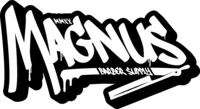Introduction:
The barbershop is more than a place for haircuts—it's a cultural institution with its own vibe, traditions, and even language. Step into any barbershop, and you'll hear a unique rhythm of conversations filled with barber slang that embodies the craft, creativity, and camaraderie of barbering.
This guide will take you on a deep dive into the most popular terms, their meanings, and their significance. Whether you're a barber, a barber-in-training, or a client wanting to better communicate your vision, understanding the language of the shop is your gateway to a better experience.
Why Barber Slang Is Important
Barber slang evolved out of necessity and culture. It’s a shorthand that helps barbers quickly understand what their clients want while reinforcing a sense of community within the shop. Here’s why it matters:
- Efficiency: Slang allows barbers to understand and execute specific styles or techniques without lengthy explanations.
- Cultural Connection: It strengthens the bond among barbers and clients, creating a shared language that’s unique to the shop.
- Clarity: Miscommunication can lead to bad haircuts. Understanding terms ensures that clients and barbers are on the same page.
Comprehensive Glossary of Barber Slang
Fade-Related Terms
-
Fade: A gradual transition in hair length from short to longer, typically from the sides and back to the crown. This term is foundational in modern barbering.
-
Variants:
- Low Fade: Starts just above the ears. Subtle and classic.
- Mid Fade: Begins halfway up the sides of the head, striking a balance between subtle and bold.
- High Fade: Begins high on the sides, offering a dramatic, edgy look.
-
Variants:
- Skin Fade (or Bald Fade): A fade that starts with no hair at the base, blending seamlessly into longer hair.
- Drop Fade: A fade that dips downward behind the ears, creating a curved silhouette for a dramatic effect.
Cutting Techniques
- Taper: Unlike a fade, which blends into the skin, a taper subtly reduces hair length around the edges of the neckline and sideburns. It’s often used for a clean, natural finish.
- Texturizing: A technique to add movement and volume to hair by cutting at different lengths.
- Blending: A precise technique used to create a smooth transition between different hair lengths.
Line-Up and Detailing
- Line-Up (or Edge-Up): The process of shaping the hairline into sharp, clean lines using clippers or razors. This technique is especially popular in modern barbering styles.
- Crispy: A term used to describe a perfectly sharp and defined line-up or design. Think of it as the gold standard for precision.
- Enhancements: Products (like hair fibers or sprays) used to darken and define the hairline, making it appear fuller and sharper.
Barber Tools and Accessories
- Clippers: The barber’s primary tool for cutting hair. Clippers come in corded and cordless varieties, often paired with guards for length control.
- Guards: Attachments for clippers, numbered to indicate hair length (e.g., #1 for very short, #8 for long).
- Shears: Professional-grade scissors used for precision cutting and styling.
- Straight Razor: A traditional razor used for shaving and detailed work, such as line-ups.
Barbering Styles and Trends
- The Chop: Slang for a significant haircut or style transformation.
- Blowout: A hairstyle where the hair is styled to have volume, often paired with fades or tapers.
- Comb Over: A classic style where hair is combed to one side, often combined with a fade for a modern twist.
How Barber Slang Shapes Shop Culture
Barber slang isn’t just about the cut—it’s about the experience. The banter between barbers and clients often features this language, making the shop a lively and welcoming space. It also serves as a badge of expertise for barbers, demonstrating their knowledge and skills. For clients, using slang builds rapport and shows appreciation for the craft.
Learn how to choose the best barbershop.
In-Depth: Fades vs. Tapers
Let’s clarify two of the most commonly confused terms:
- Fade: A fade focuses on blending hair length seamlessly into the skin. It’s a high-maintenance style that requires skill to achieve.
- Taper: A taper, while similar, leaves more hair on the sides and back and blends into shorter hair, not the skin. It’s a subtle, low-maintenance option.
Knowing the difference can save you from walking out with a style you didn’t want!
Tips for Mastering Barber Slang
- Observe and Listen: Next time you're in a shop, pay attention to the terms barbers and clients use.
- Ask Questions: Don’t be shy about asking what a term means. Barbers love sharing their craft.
- Follow Barber Content: Social media accounts of top barbers often showcase their techniques and use industry-specific terms.
Barber Slang Quiz: Test Your Knowledge!
Match the slang with its definition:
- What’s a "drop fade"?
- What’s the purpose of "enhancements"?
- What does "crispy" describe in barbering?
Answer these to see if you're ready to talk like a pro in the shop!
Talk the Talk, Walk the Walk
Barber slang is your ticket to fully experiencing the culture and artistry of barbering. The next time you sit in the chair, don’t just describe what you want—speak the lingo! It’ll impress your barber and ensure you leave the shop with a cut that’s just what you envisioned.

